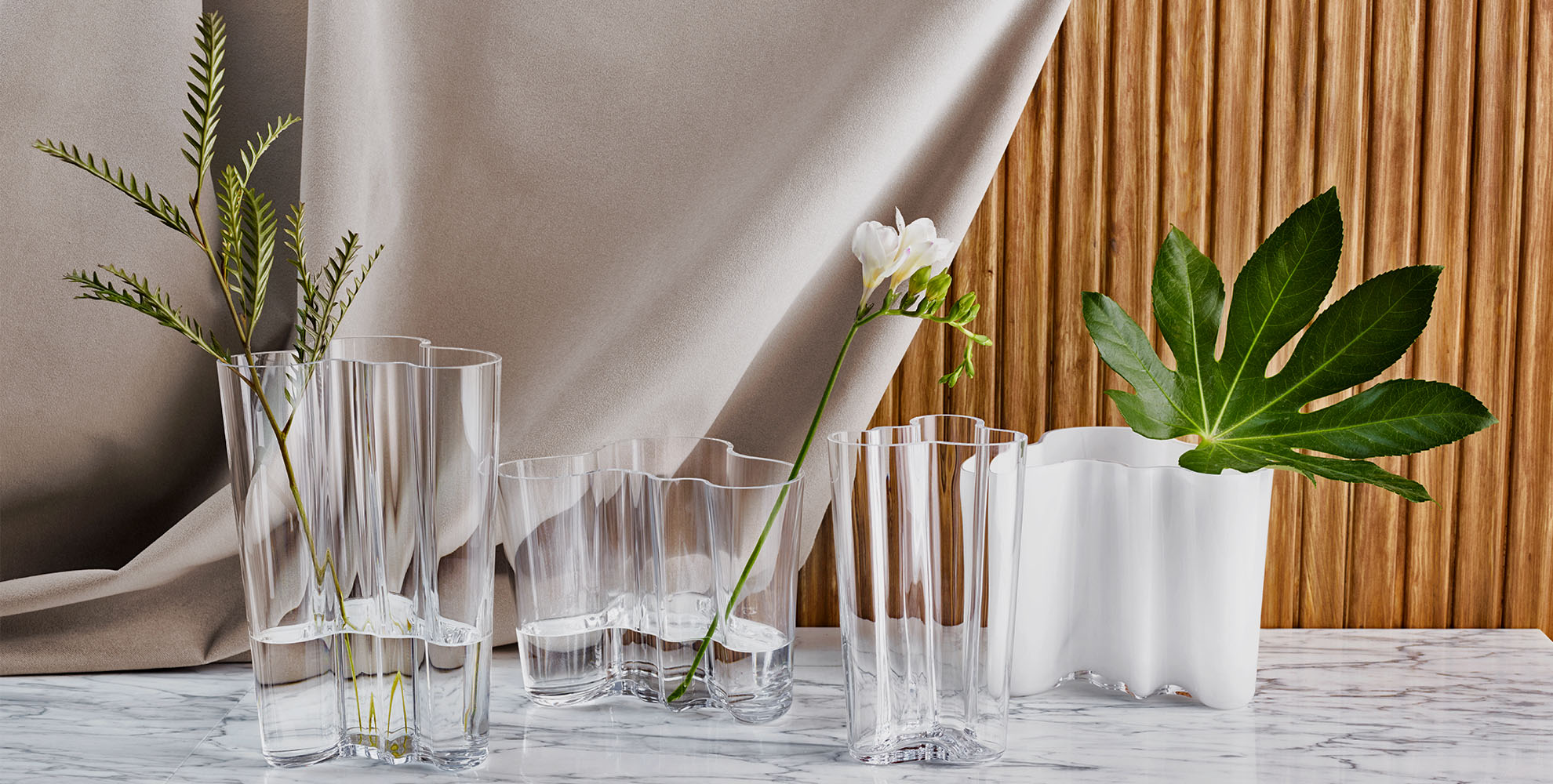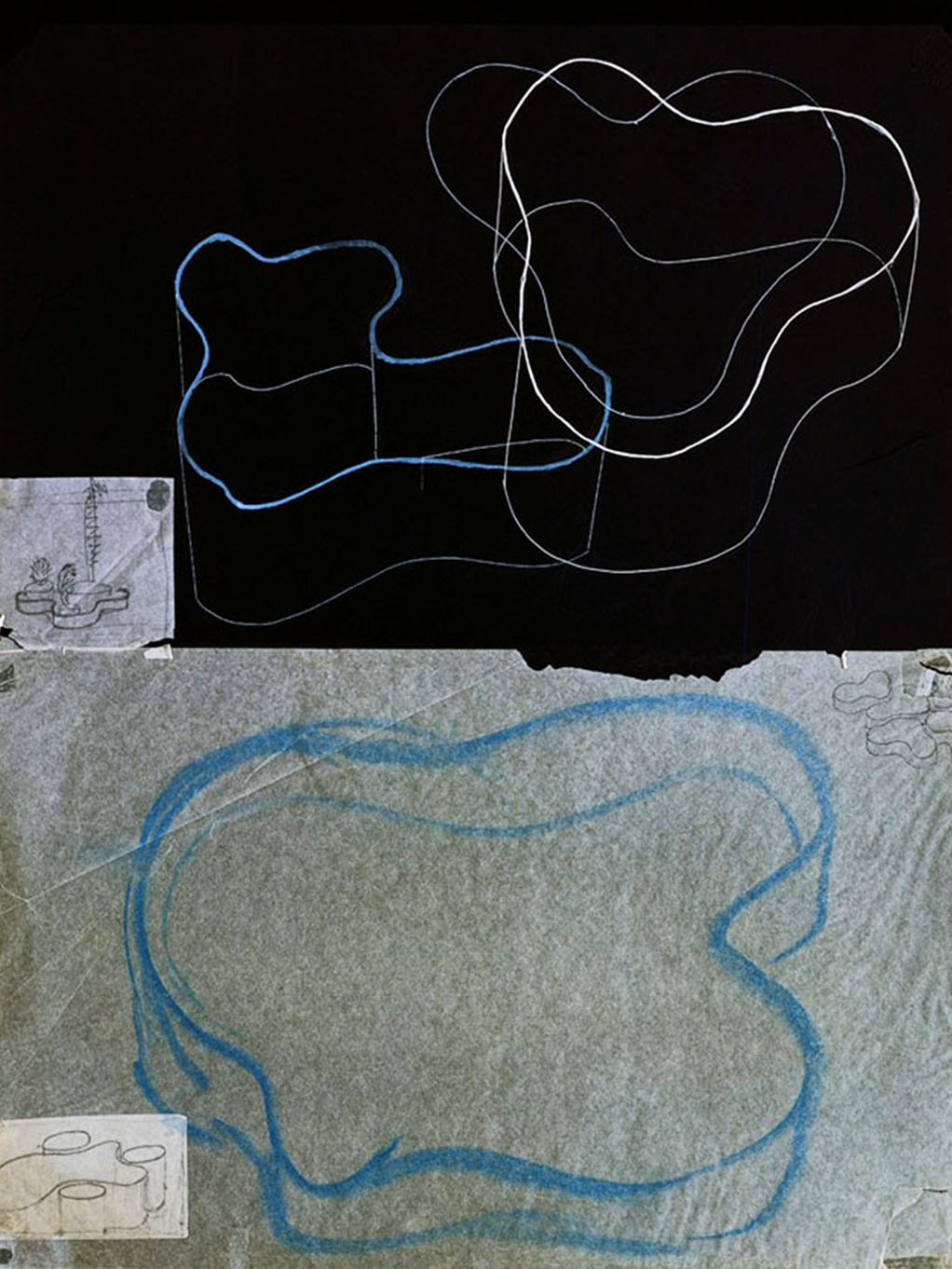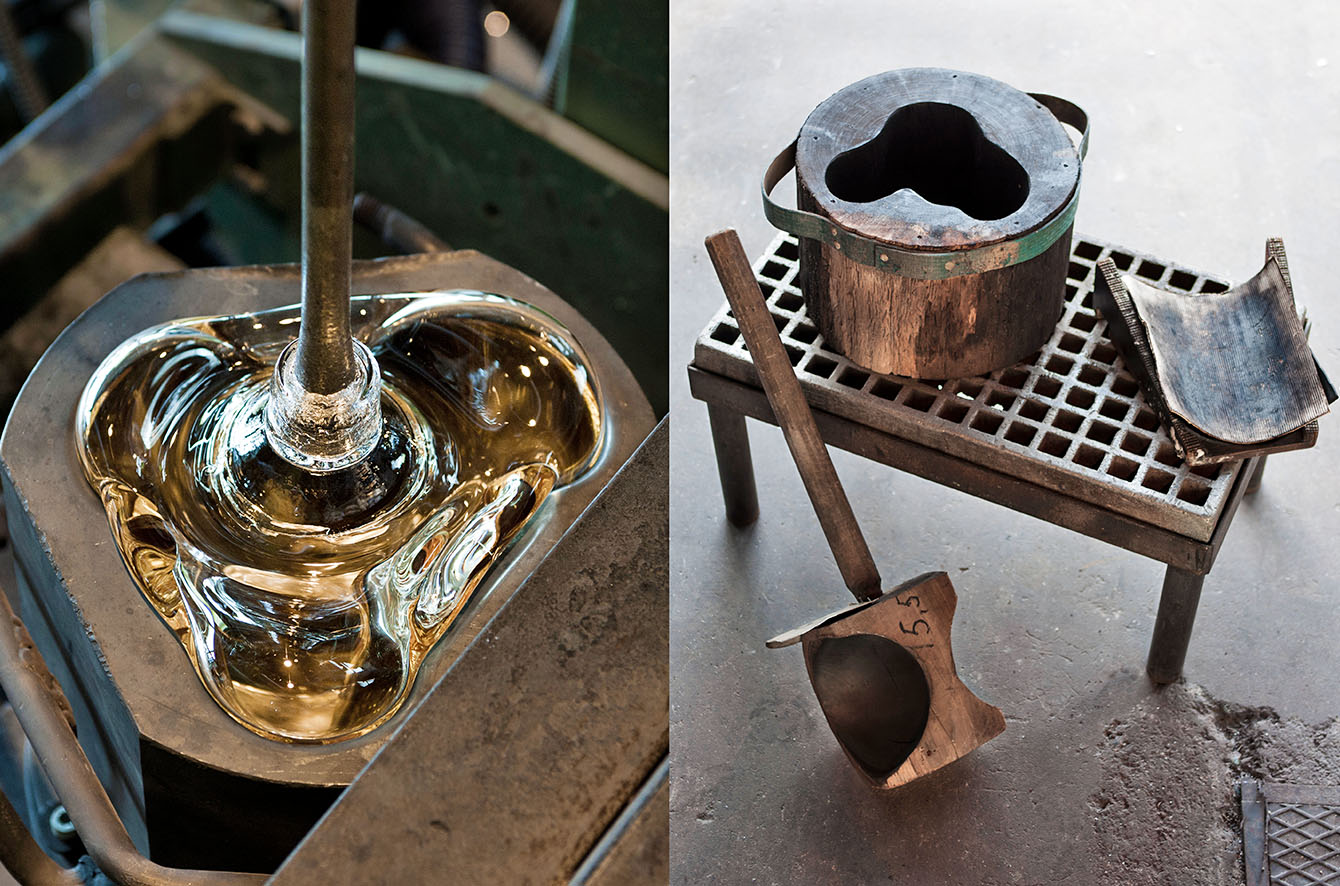
Aalto Vase & Aalto Finlandia Vase by Iittala
Behind the Design:
The Aalto Vase
Finnish master Alvar Aalto's signature vase is a highlight of Nordic design.
We took a closer look at the inspiration for this modern icon.
What do a wave, a restaurant and an Eskimo woman's leather pants all have in common? It isn't the setup for a groan-worthy joke, but rather the possible names of an iconic Finnish design. Alternately known as the Aalto Vase, Savoy Vase and Eskimåkvinnans skinnbyxa (say that 10 times fast), Alvar Aalto's 1936 glass vase stands out as a highlight of Scandinavian design. Though Finland is not technically part of Scandinavia, its language and culture does borrow from its nearby Nordic neighbors and demonstrates the streamlined, elegant and simple aesthetic valued by the Scandinavian design movement.

Image courtesy of Iittala
Alvar Aalto first sketched the vase to enter into a contest for the Karhula-Iittala glass company, and the design was added to a collection of items he and his wife Aina created for the Savoy restaurant in Helsinki. The prototype had a fascinating start, with Aalto blowing glass into a mold made from wood sticks stuck in mud, allowing the molten glass to escape the edges and gain its signature wavy shape. It's reported that Aalto was inspired by an Eskimo woman's traditional costume (indeed, that's the note on the bottom of his sketch). However, his last name actually translates in Finnish to "wave," long thought a rather fortunate coincidence.
Whatever the inspiration or official name, there's no doubt that Aalto was heavily influenced by organic shapes and fluidity in his work. A prolific architect, about 300 of his building plans were executed, mostly in Finland. His career spanned many aesthetic movements, but his legacy is firmly rooted in Scandinavian modernism.
“We should work for simple, good, undecorated things”
As an artist and designer, Aalto was primarily interested in sculptural processes and experimental methods, many of which he translated from smaller works to building techniques. But he was also a champion of functional simplicity and accessibility—tenets that remain dear to Scandinavian aesthetes to this day. In a 1957 speech, he said, "We should work for simple, good, undecorated things, but things which are in harmony with the human being and organically suited to the little man in the street."

Image courtesy of Iittala
Back to the vase: The "little man in the street" was welcome to interpret this design as anything he wished, and to use it accordingly. Displayed as an ice bucket, planter, cut-flowers vessel or simply as an objet d'art on its own, the Aalto Vase has charmed and interested design enthusiasts for more than 80 years. Still manufactured by Iittala in Finland, each vase takes seven glassblowers and artisans a total of 30 hours to craft—so each vase is a truly unique piece of art. The original wooden mold (created when Aalto's multi-layered steel mold design failed) was slowly burned away with use, which lends the legend an ephemeral quality that greatly enhances its organic aesthetic.
This iconic design celebrated its 80th anniversary in 2016 and we've seen many iterations of the Aalto Vase in height, size and color since. Newer shades include a stormy but steadfastly neutral dark grey and a vibrant emerald green. Maybe the same can't be said for Eskimo breeches, but the Aalto Vase is poised never to go out of style.





